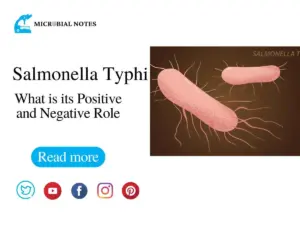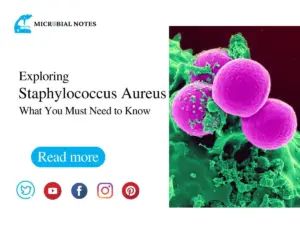Principle of capsule staining
Definition
The glycocalyx is the name for a polysaccharide or polypeptide layer that is gelatinous. These polysaccharides are found outside the bacterial cell wall and can be heteropolysaccharides or homopolysaccharides made up of different types of sugars. The glycocalyx is referred to as a capsule if it is firmly connected to the cell wall. Some bacteria have a coating on their cell walls that is 0.2 um thick.
The capsule is different from the slime layer. The majority of bacterial cells produce a capsule which is a thick, distinct layer that lies outside the cell wall, whereas the slime layer is loosely attached. To identify capsule production, the capsule stain uses both an acidic and a basic stain.
Both Gram positive bacteria and Gram negative bacteria include the capsule. While most capsules are made of polymers of polysaccharides, the Bacillus anthracis capsule is made of a polypeptide (polyglutamic acid).
Some gram-positive bacteria, such as leuconostoc, produce cellulose capsules that are made up of glucose or fructose. The capsule of Klebsiella pneumonia is made up of glucose, galactose, rhamnose, etc.
The capsule comes in two varieties.
Macro-capsule: a light microscope-visible structure with a thickness of at least 0.2 um.
Microcapsule: observable under an electron microscope when less than 0.2 um thick.
Functions of capsule bacteria?
Because of its potential to cause disease, the capsule is regarded as a virulence factor.
• Most hydrophobic hazardous substances, such as detergents, and bacteriophages may not adhere to them.
• They could prevent eukaryotic cells, such as macrophages, from engulfing the organism, which would increase its pathogenicity.
• The water in the capsule guards against desiccation and keeps the cell alive.
• When nutrient supplies are inadequate, capsules provide nutrition.
Capsular material and bacterial cells are typically distinguished from one another using capsule stain. A capsule is a gelatinous coating that covers and clings to the cell wall and is secreted by bacteria. Though some capsules contain polypeptides, most capsules are made of polysaccharides. The capsule is different from the slime layer that most bacterial cells produce in that it is a thick, noticeable, separate layer outside the cell wall. The capsule stain uses both a basic and an acidic stain to identify capsule formation.
Capsule staining methods
Nigrosin method
This one is the easiest way to color a capsule. In this method, Crystal violet and India ink (Nigrosin) are used as dyes. The bacterial cell’s capsule looks like a clear ring around the stained body of the cell and the dark background (color depends upon the dye used – India ink or Nigrosin).
Reagents
- Nigrosin
- Crystal violet
Procedure
- Put a drop of India ink or Nigrosin on a grease-free glass slide near one end.
With the help of a clean inoculating loop, take a small piece of the bacterial colony or a loopful of the broth culture. - Mix the dye on the glass slide well with the culture.
- Now, get another microscopic glass slide and put it at an angle of between 30° and 45° next to the specimen-dye mixture.
- Move the slide toward the drop of the specimen-dye mixture until it touches the drop at the right angle. Then quickly and smoothly move the spreader slide over the sample slide, pulling the dye mixture behind it into a thin film.
- Let the smear dry in the air.
- NOTE: Do not heat, as heat will melt the capsule and change the shape of the bacterial cell.
- Now, cover the smear slide with crystal violet solution for 1 minute and rinse carefully and gently with water.
- NOTE: Be careful with this step because water can wash out the smear and remove the capsule from the cell.
- Let the smear slide dry in the air.
- NOTE: Don’t blot the slide dry, or the capsule and smear may get messed up.
- Observe under a Light microscope with the High power objective (45X) and the oil immersion objective (100X).
Results
On a dark background, the capsule looks like a clear ring or zone around a purple bacterial cell body. The color of the background comes from Nigrosin
Anthony’s stain method
This is another one of the most common ways to stain capsules. The crystal violet stain is used as the main stain in this method. A 20% solution of copper sulfate is also used. This solution is an important part of the staining process because it acts as both a decolorizer and a counterstain.
Reagents
Crystal Violet (1% aqueous): the primary stain;
A non-heat-fixed smear is stained by crystal violet. The cell and the capsular substance will now turn dark.
Copper sulfate (20%), a decolorizing agent:
The primary stain sticks to the capsule but does not attach to it because the capsule is nonionic, unlike the bacterial cell. Instead of using water as a decolorizing agent in the capsule staining process, copper sulfate is employed. Copper sulfate removes the major purple stain from the capsular material without removing the stain that is linked to the cell wall. The decolorized capsule absorbs the copper sulfate at the same time, and in contrast to the dark purple color of the cell, the capsule will now appear blue.
Procedure for capsule staining
- Take grease-free microscope glass slide and put a drop of crystal violet near the edge of one end.
- Using a sterilized inoculating loop, take a small piece of the bacterial colony or a loopful of the cultured broth.
- Mix the dye on the glass slide well with the culture.
- Now, get another microscopic glass slide and put it at an angle of between 30° and 45° next to the specimen-dye mixture.
- Move the slide toward the drop of the specimen-dye mixture until it touches the drop at the right angle. Then quickly and smoothly move the spreader slide over the sample slide, pulling the dye mixture behind it into a thin film.
- Let the smear dry in the air.
- NOTE: Do not heat, as heat will melt the capsule and change the shape of the bacterial cell.
- Now, tilt the smear slide and run the 20% copper sulfate (CuSO4) solution over it to clean it.
- NOTE: Don’t blot the slide dry, or the capsule and smear may get messed up.
- Look through the microscope with the High power objective (45X) and the oil immersion objective (100X). Make sure to turn down the light when looking at the capsule through a microscope so that it is easy to see.
Capsule staining Results
With this method, the capsule looks like a faint blue halo around a purple bacterial cell body. The background is clear because no background stain is used.
References:
https://microbiologyinfo.com/capsule-staining-principle-reagents-procedure-and-result/







